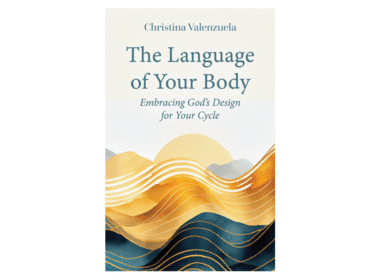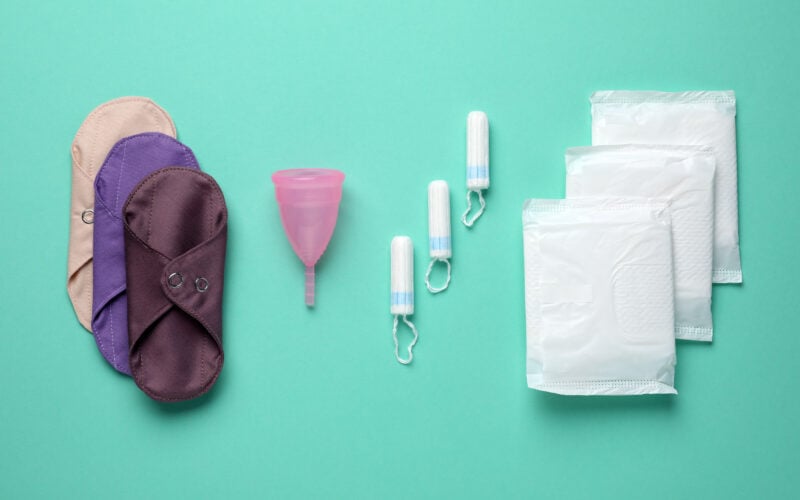Like one in five women, I had heavy menstrual bleeding, or menorrhagia, as a teen and young adult. I dealt with many of the classic symptoms, including lack of energy, soaking through a pad or tampon every hour for several hours, having constant pain in my lower stomach, and being unable to do my usual activities. For many women with heavy menstrual bleeding who are finished with childbearing, have had cancer ruled out, and in whom every other treatment option has failed, a surgical procedure called endometrial ablation may be recommended. However, as this article will discuss, the significant risks of endometrial ablation may not be worth the temporary relief from heavy bleeding that it might provide.
What is endometrial ablation?
Endometrial ablation is a procedure that uses heat or cold energy to destroy the tissue lining your uterus, known as the endometrium. For some, it may be considered a welcome alternative to a hysterectomy, a major surgical procedure that halts menstrual bleeding by removing the uterus.
One British medical journal called endometrial ablation “one of the great gynecological success stories” that “has changed the management of heavy menstrual bleeding dramatically” [1]. Unlike hysterectomy, endometrial ablation is less invasive and can often be done without an overnight hospital stay because the procedure itself takes only a matter of minutes with newer devices. To sum, the idea behind endometrial ablation is that by destroying the endometrium, which is typically shed as menstrual bleeding, the procedure will lighten a woman’s subsequent periods.
The harms of endometrial ablation may be worse than previously thought
But an investigation in 2020 by MedPage Today found that women are not being told the full truth about the risks that come with endometrial ablation and instead are under the impression that the procedure will be quick and easy. The outlet revealed that women have been confiding with one another for years in a private Facebook group about their concerns with endometrial ablation and a petition is underway to launch a class action lawsuit for women harmed by the procedure.
While it’s true that endometrial ablation may provide relief from heavy bleeding, unfortunately the relief is likely only temporary. Between 18% and 38% of women are estimated to need a hysterectomy or another endometrial ablation within five years of having an endometrial ablation [1].
Some doctors are backing off endometrial ablation because of the complications, a follow-up story by MedPage Today showed.
Risks of endometrial ablation
Complication rate after endometrial ablation is unknown
Women in the United States who have had an endometrial ablation have reported serious, if not life-threatening, complications to the United States Food and Drug Administration’s (FDA) Manufacturer and User Facility Device Experience (MAUDE) database [1]. But it’s unclear how often the complications occur without knowing the total number of women who have had the procedure. The complications reported include bowel injury, urinary tract injury, severe burns, complications that lead to hysterectomy or other major surgery, necrotizing fasciitis (a life-threatening bacterial infection that spreads rapidly and can be fatal), cardiac arrest, and death.
MedPage Today cited endometrial failure, defined as “severe pain resulting from endometrial regrowth and blood trapped under scar tissue” as another potential complication with unknown frequency. Multiple women who underwent endometrial ablations characterized this cyclic pain as so severe that it was “labor-like.”
Pregnancy after endometrial ablation is possible…and dangerous
Although the lining of your uterus is destroyed with endometrial ablation, you can still become pregnant. Pregnancy after endometrial ablation is dangerous to both mother and child and has even led to maternal death [2]. Women who become pregnant after endometrial ablation have a higher risk of delivering their baby early, having an ectopic pregnancy (when an embryo grows outside of the uterus), having growth restriction of the baby, hemorrhaging postpartum, and having abnormal placentation. Abnormal placentation is a serious condition in which the placenta attaches deep into the uterine wall and even other organs, making it difficult to remove the placenta after the baby is born, and thereby increasing postpartum hemorrhage risk.
Endometrial ablation is only recommended for women who have decided they don’t want any more children, and who also meet several other criteria such as never having had gynecological cancer. Unintended pregnancy after endometrial ablation is rare, estimated to occur in one of every 140 women, or 0.7% of the time [1].
Post-Ablation Tubal Sterilization Syndrome (PATSS)
Because of the risks associated with pregnancy after endometrial ablation, some women may choose to undergo a sterilization procedure (such as a tubal ligation) along with endometrial ablation. However, women who have undergone endometrial ablation and have been sterilized with a tubal ligation, commonly referred to as having your “tubes tied,” are also at risk for a delayed complication called post-ablation tubal sterilization syndrome, or PATSS [3]. Little research exists on this syndrome characterized by pelvic pain, which often requires surgery, such as a hysterectomy or bilateral salpingectomy (removal of the Fallopian tubes) to correct.
A 2012 review of two case reports noted that just 26 published cases of PATSS had been documented [3]. A 2007 article in the Journal of Minimally Invasive Gynecology estimated that between 8% and 33% of women who have had endometrial ablation after previous tubal ligation will develop PATSS. In a more recent study in 2021, 19% of women who underwent endometrial ablation and tubal ligation at the same time developed PATSS [4].
A better alternative to endometrial ablation for treating heavy menstrual bleeding
Heavy menstrual bleeding can be a symptom of many other conditions, including fibroids and polyps, adenomyosis, endometriosis, irregular ovulation, polycystic ovary syndrome (PCOS), hypothyroidism, and cancer. All of these potential causes should be worked up before endometrial ablation is even considered. Even if everything else has been ruled out, some women will still bleed after endometrial ablation.
Natural Procreative Technology, also called NaProTechnology or NaPro, is a medical approach used by NaPro-trained doctors that identifies the underlying issues causing menstrual pain or irregularity, and works with (rather than trying to suppress) your fertility and menstrual cycle. This approach can be used to address heavy menstrual bleeding along with many other conditions such as infertility and hormonal disorders. Women chart their cycles according to an evidence-based fertility awareness method known as the Creighton Model FertilityCare System (CrMS), and NaPro-trained doctors use this information along with other tools, like imaging tests and blood hormone tests, to make a diagnosis.
When I described my symptoms of pain, heavy menstrual bleeding, and a few years of infertility to a NaPro-trained doctor, he ordered an ultrasound scan and immediately found an orange-sized ovarian cyst that needed surgical removal. He also strongly suspected endometriosis was the underlying cause of my heavy bleeding, and suggested I have surgery to remove the ovarian cyst as well as the endometriosis. He educated me on the fact that while the surgery would likely relieve my heavy bleeding, my endometriosis could come back. While I understand that the endometriosis can still recur, treating it did relieve my heavy bleeding. Best of all, by addressing the root cause of my infertility, my NaPro doctor gave me the chance to have children.
References:
[1] Kumar, Vinod et al. “Endometrial ablation for heavy menstrual bleeding.” Women’s health (London, England), vol. 12, no. 1 (2016): pp. 45-52. doi:10.2217/whe.15.86 [2] Laberge, P-Y. “Serious and deadly complications from pregnancy after endometrial ablation: two case reports and review of the literature.” Journal de gynecologie, obstetrique et biologie de la reproduction, vol. 37, no. 6 (2008): pp. 609-13. doi:10.1016/j.jgyn.2008.05.006 [3] Tam, Teresa et al. “Post-ablation tubal sterilization syndrome following NovaSure endometrial ablation: two case reports.” Gynecological Surgery, vol. 9 (2012): pp. 449-52. https://doi.org/10.1007/s10397-012-0744-6 [4] Chaves, Katherine F. et al. “Post-ablation tubal sterilization syndrome: Does route of sterilization matter?” Contraception, vol. 107 (2022): pp. 17-22. https://doi.org/10.1016/j.contraception.2021.10.015Additional Reading:
Adenomyosis vs. endometriosis: How they’re similar, and how they differ
Can endometriosis come back after surgery?
Considering endometriosis surgery? Here’s how to find a good endo surgeon
Post-tubal ligation syndrome: when getting your “tubes tied” isn’t as tidy as it sounds












Thank you so much for this article. We have suffered so much through out the years without ever being heard!
Thanks for this! Just had my hysterectomy on 11/4/24. Wanting to hold someone accountable because I saw surgeon who did my hysterectomy 7/2023 for complaints of chronic pelvic pain and low back pain. Said things were fine. Nor was I made aware of PATSS before ablation.